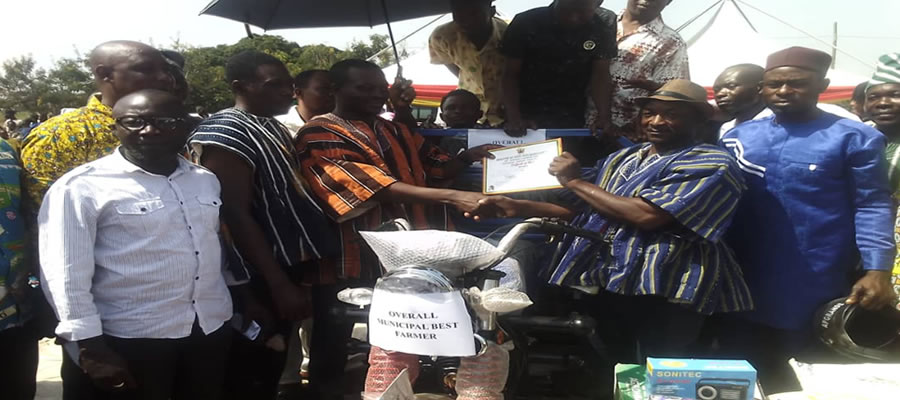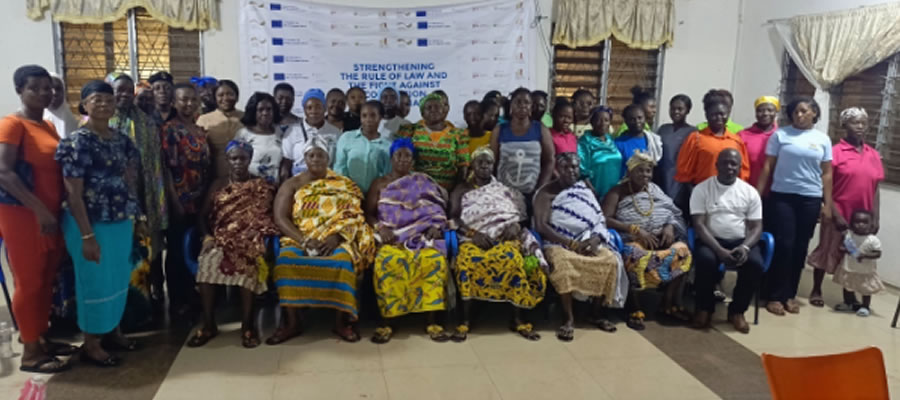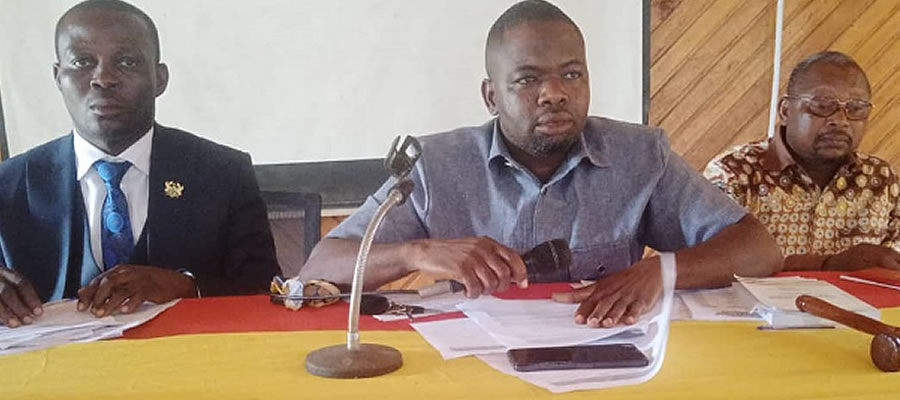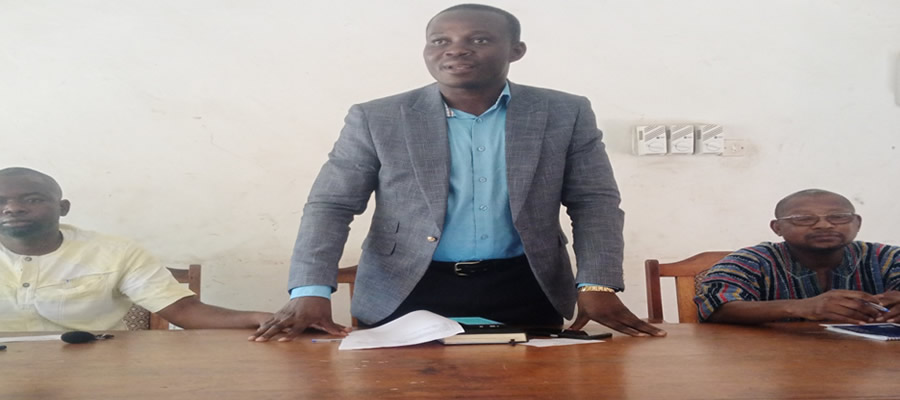

Educational Attainment and Participation
Education plays a critical and distinguishing role in the development of every society. The ability to read and write is an essential ingredient in developing the intellectual, moral and practical capacities of the individual, family and society as a whole. With reference to the 2010 PHC, data show that, the proportion of the illiterate population (66%) in the municipality was higher than the then regional and national averages of 48.5% and 42.1% respectively.
Enrolment levels at the basic level in the municipality have increased tremendously over the years especially at the primary and Junior High School. However, the KG had witnessed a marginal drop of about 14% from 2019/2020 academic year to 2021 on the Senior High Schools, there has been an increase in enrolment though 2021 shows fall in total number of both male and female, it is due to the change in academic calendar admission for the first years are still in progress. Invariably, only second and third years are recorded. On sex disaggregation, there is marginal increase for both sexes on annual basis at each level. Comparatively, male dominates the females at all levels except 2017/2018 academic year for JHS where female was more than male of about 99. The table below shows enrolment levels from KG to SHS.
It is worth noting that, despite the increasing numbers of enrolment figures for various levels as shown above, there still exist significant numbers of dropouts which necessitates a project that would call for reenrollment just as the complementary basic education which was implemented by Action Aid-Ghana.
School Infrastructure and utilities
The existence of school infrastructural facilities within the municipality is one of the key determinants of ensuring access to education in achieving Sustainable Development Goal 4. In terms of public ownership, the municipality has 82 KG, 88 primary schools, 48 JHS and 3 SHS. In respect to number of classes, the KG has 204 classes, primary has 505, JHS 148 and SHS 71.
Educational Attainment and Participation
The Atebubu-Amantin Municipal has the second highest proportion of population (6 years and above) that has never been to school. The proportion of the population aged 6 years and older who has never been to school in the Municipal (57.1%) compares poorly with that of the Brong-Ahafo Region (42.0%).
Enrolment levels at the basic school level in the Municipal have increased tremendously over the years. For instance, for the 2011/2012 academic year, the total number of males and females enrolled at the primary level were 11,394. This increased to 12,316 for the 2012/2013 academic and further increased to 14,411 for the 2013/2014 academic year. The table below shows the enrolment level in the MUNICIPAL from 2005-2010 for the various levels from K.G to J.H.S.
From the above table, it can be deduced that, the Municipal has experienced a reduction in the enrolment levels at KG level. However, basic levels experienced an increment in their enrolment levels. This increment is attributed to the various policies and strategies introduced by the government to improving education and as a result achieving the sustainable development goal of educational for all. These policies and strategies include, school feeding programme, which almost all KG and Primary schools in the MUNICIPAL are benefitting, construction of classrooms, capitation grant and the provision of free exercise books among others. This therefore implies that, the 57.1% of the proportion of the population who have not attained basic education will achieve some level of education by 2020.
However, the dropout rate among both male and female pupils as they progress from one stage of the educational structure or ladder to another especially females is very alarming. Though the participation of both sexes is low, the dropout rate for girls is more pronounced at all levels of academic progression. It is the Complementary Basic Education implemented by Action aid Ghana that is salvaging the situation. Hundreds of pupils between the ages of 8 and 14 are re-enrolled back to formal school due to this project.
School Infrastructure and Utilities
The mere existence of schools is a key determinant of access to education. The Municipal as at February 2017 academic year has two (2) crèche, 80kindergartens, 87primary schools, 42 Junior High Schools (JHS), Two (2) Senior High Schools (SHS) and one Teachers Training College all as public schools. There are also 32 K. G’s, 32 primaries and 17 JHS also owned by private individuals. This implies that, private individuals are also contributing to the development of education in the Municipal as about 27% of the total number of basic schools in the Municipal are ran by private individuals with the government owning about 73%.
In distribution wise, Primary schools are the most widely distributed educational facilities in the District. Most of the communities have access to a primary school located either in the community or in a neighboring community. This notwithstanding, most communities in the Municipal do not have enough JHS’s, therefore pupils in communities where there are no JHS’s have to trek from their places to nearby communities where these schools are found.
Also the two SHS’s and the College of Education in the MUNICIPAL are located in the only two urban towns of the District. Therefore, pupils and students who want to access the facilities after basic and SHS education respectively have to relocate to these towns. This already stated above is a disincentive to pupils and students alike and therefore drop out of school at the primary, JHS and SHS levels.
Underscoring the essence of education to the development of the Municipal, the Municipal has over the year’s undertaken expansion in the level of educational infrastructure since it is a major prerequisite for effective and improved education. The Municipal has 715 permanent class rooms and 145 temporal class rooms for public, 288 permanent classrooms and 22 temporal class rooms for private. All these structure are roofed either by thatch, zinc and other roofing materials. Nevertheless, most primary schools are found in make- shift structures or under pitched pavilions whilst almost all the JHS’s and SHS’s have well-constructed and maintained buildings. It must however be emphasized that not a single one of them has a workshop to facilitate technical trainings for pupils and libraries facilities in all the schools for the pupils and students.
In the District’s quest to ensuring that teachers are well motivated to give out their best in improving the performance of pupils and students in the Municipal, the Municipal Has constructed 23 teachers’ quarters’.
The Assembly should consider channeling enough resources into constructing more befitting K.G classes, primary and JHS classrooms to eliminate the under-tree classroom situations and teacher’s bungalows and offices among others.
Though the Municipal has made headway in the provision of educational infrastructure, little can be said of that of sanitation facilities. Out of a total of 84primary schools and 42 JHS’s in the Municipal only 18 primary schools and 23 JHS’s have toilets and urinals within their compounds.
This therefore implies that, pupils and teachers alike spend productive hours to attend to natures call. Nevertheless, the two (2) SHS’s have access to these sanitary facilities in their compounds. Presently, almost all JHS’s within the major towns in the Municipal have access to electricity. This therefore facilitates teaching and learning at night under strict supervision from the educational directorate.
Teacher – Pupil Ratio
The teacher-pupil ratio is an indicator used to assess the adequacy of teachers in relation to pupils. The teacher-pupil ratio in the Municipal has improved over the years at all levels and the standard is above that of the national standard teacher pupil ratio.
These current numbers of pupils per teacher could enhance the attention given to pupils and students. This makes the classroom more conducive for learning as teachers would have ample time to address the individual academic problems of pupils and students.
Staffing
One of the most important stakeholders in education is teachers. Staffing in the various schools has improved over the years. The Municipal has a total number of 2541 teachers in 2013 as compared to 699 in 2010 with 1835 being males whilst 706 are females. Out of this, about 64.5% are untrained with 35.5% being trained as shown in the table beneath.
From the table above, it can be deduced that, the number of untrained teachers especially at the KG level are more than the number of train teachers. This could have serious negative repercussions on the children since they do not have the requisite teaching methodologies to let them understand. Similarly, the primary suffers same. This therefore implies that, the quality of delivery expected from teacher-pupil is compromised. This therefore affects badly the performance of pupils especially at the Basic Education Certificate Examinations. It is therefore recommended that, periodic trainings should be given to these teachers to enable them build a sound foundation at the KG and primary level.
Date Created : 3/27/2023 7:19:23 AM












 facebook
facebook
 twitter
twitter
 Youtube
Youtube
 +233 593 831 280
+233 593 831 280 0800 430 430
0800 430 430 GPS: GE-231-4383
GPS: GE-231-4383 info@ghanadistricts.com
info@ghanadistricts.com Box GP1044, Accra, Ghana
Box GP1044, Accra, Ghana